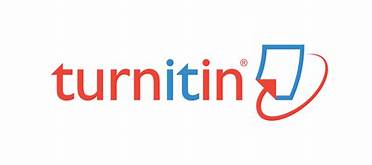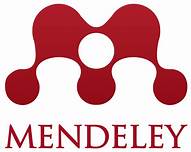Implementasi Kurikulum Terpadu Model Integrated di SMP ISLAM IMAM ASY SYAFII KOTA METRO PROVINSI LAMPUNG
Abstract
Integrated learning is a learning process that combines various subjects in an effort to achieve desired competencies. The Integrated Learning curriculum is designed using an interdisciplinary approach by combining several fields of study. This study aims to understand and explain integrated learning with an integrated model at Imam Asy Syafii Islamic Junior High School in Metro City. The curriculum at Imam Asy Syafii Islamic Junior High School integrates three types of curricula, namely the Pure Arabic Language Curriculum (Silsilah li ta’lim Lughoh al Arabiyah), which is an Arabic language curriculum adopted from Imam Muhammad bin Saud Islamic University, Islamic Religious Education/Pondok Pesantren Special Diniyah Education, and the National Curriculum of the Education Department. This research is a qualitative descriptive study with data collection techniques using interviews, observations, and documentation. From the results of the research conducted, it can be concluded that: (1) Imam Asy Syafii Islamic Junior High School has implemented an Integrated Curriculum model by integrating several types of curricula to achieve competencies, namely Arabic language proficiency and knowledge of Islamic religion typical of pondok pesantren and general education. (2) Imam Asy Syafii Islamic Junior High School implements a boarding system. (3) Supporting and inhibiting factors for curriculum integration are divided into two, namely internal factors originating from within Imam Asy Syafii Islamic Junior High School and external factors from outside Imam Asy Syafii Islamic Junior High School.
Full Text:
PDFReferences
Delly Wardhana, Ta’lim al Ta’bir al Ishthilahy fi al Arabiyah al Mu’ashirah. 2020. https://repository.uinjkt.ac.id/dspace/handle/123456789/51299.
Kharisma,E.P. 2016. Pengembangan Perangkat Pembelajaran Networked Terintegrasi Scientific Approach Di Sd. Jurnal Nomor 28.
Sugiyanto. 2010. Model-Model Pembelajaran Inovatif. Yuma Pressindo.
Nugroho et al., 2023. Metodologi Penelitian Akuntansi dan Praktik Penulisan Artikel Bidang Akuntansi. Kabupaten Bandung:Widina Media Utama.
Chesterton, Paul, Faye Deane, and Daniel Moore. 2023. “Implementing An External Student Placement Strategy Into an Undergraduate Chiropractic Curriculum in the United Kingdom: An Education Descriptive Report.” Journal of Chiropractic Humanities 30: 1–8. https://doi.org/10.1016/j.echu.2023.01.001.
Haka, Nukhbatul Bidayati, Emilya Majid, and Agus Pahrudin. 2021. “Pengembangan E-Modul Android Berbasis Metakognisi Sebagai Media Pembelajaran Biologi Kelas XII SMA/MA.” Edu Sains Jurnal Pendidikan Sains & Matematika 9(1): 71–83.
Hovey, Liam et al. 2023. “Vascular Surgery In-Training Examination Performance Following Implementation of the Vascular Surgical Council on Resident Education Curriculum.” Journal of Vascular Surgery 78(2): 534–38. https://doi.org/10.1016/j.jvs.2023.04.003.
Khayat, Waad F., Majed A. Almalki, Mashael S. Alqahtani, and Sara W.
Taher. 2023. “Evaluation of the Level of Integration of the Dental Curriculum in Umm Al-Qura University.” Journal of Taibah University Medical Sciences 18(6): 1449–58. https://doi.org/10.1016/j.jtumed.2023.05.019.
Obi, Clinton Onyebuchi et al. 2022. “Comparison of the Integrated Organ/Systems-Based Curriculum with the Traditional Subjects-Based Medical Curriculum: Short Communication.” Annals of Medicine and Surgery 73(November 2021): 103116. https://doi.org/10.1016/j.amsu.2021.103116.
Pahrudin, Agus et al. 2020. “The Effects of the ECIRR Learning Model on Mathematical Reasoning Ability in the Curriculum Perspective 2013: Integration on Student Learning Motivation.” European Journal of Educational Research 9(2): 675–85.
———. 2021. “The Effectiveness of Science, Technology, Engineering, and Mathematics-Inquiry Learning for 15-16 Years Old Students Based on K-13 Indonesian Curriculum: The Impact on the Critical Thinking Skills.” European Journal of Educational Research 10(2): 681–92.
Purwanto, Burhan Eko et al. 2020. “The Implementation of Cooperative Learning to Developed Management of Language Learning System.” Journal for the Education of Gifted Young Scientists 8(1): 379–92.
Rósa, Blanka. 2024. “In Pursuit of Social Emotional Learning in a Swedish Pre-Service Teacher Education Programme: A Qualitative Study of Intended Curriculum.” Teaching and Teacher Education 142(June 2023).
Sarno, Danielle L. et al. 2022. “A Novel Interventional Pain Simulation-Based Education Curriculum: Implementation to Enhance Procedural Training.” Interventional Pain Medicine 1(4): 100167. https://doi.org/10.1016/j.inpm.2022.100167.
Southworth, Jane et al. 2023. “Developing a Model for AI Across the Curriculum: Transforming the Higher Education Landscape via Innovation in AI Literacy.” Computers and Education: Artificial Intelligence 4(January): 100127. https://doi.org/10.1016/j.caeai.2023.100127.
Strachan, Scott Munro et al. 2019. “Using Vertically Integrated Projects to Embed Research-Based Education for Sustainable Development in Undergraduate Curricula.” International Journal of Sustainability in Higher Education 20(8): 1313–28.
Tsortanidou, Xanthippi, Thanasis Daradoumis, and Elena Barberá. 2019. “Connecting Moments of Creativity, Computational Thinking, Collaboration and New Media Literacy Skills.” Information and Learning Science 120(11–12): 704–22.
DOI: https://doi.org/10.30596/jmp-dmt.v5i2.19072
Refbacks
- There are currently no refbacks.







